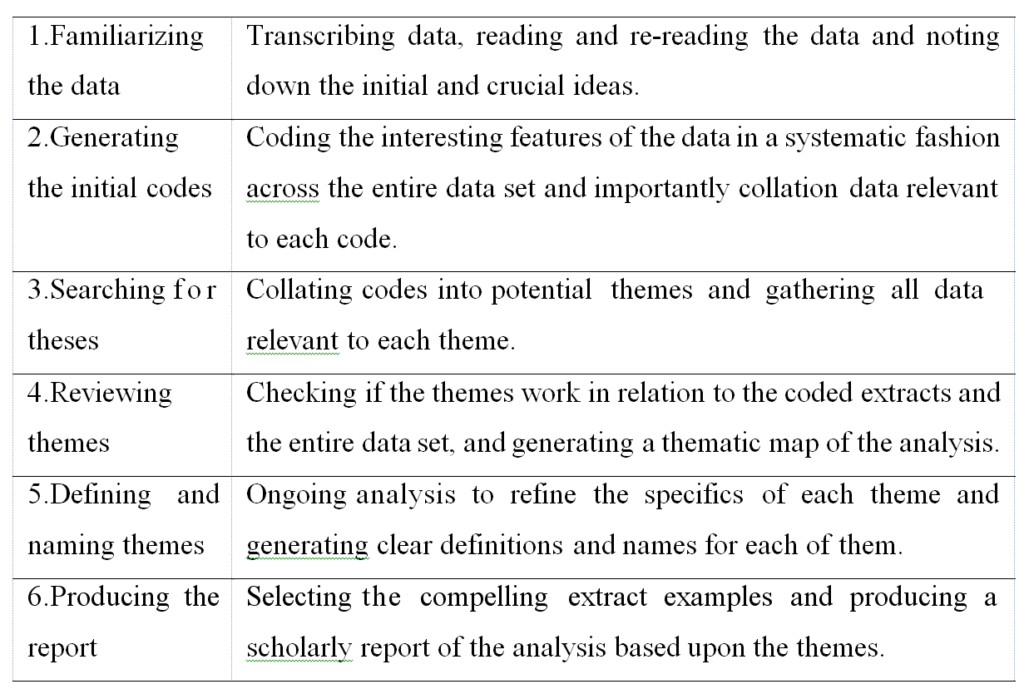The interview questions which comprise 5 questions are totally derived from the research objectives and questions, for the main themes of the interview questions including only learning challenges and motivation towards spoken English skills. The reliability and validity of interview questions are checked by specialists and experts who have experiences in respective areas of expertise ranging over 10 years.
Data Scoring Procedures
In quantitative study, all data from the three instruments were stored using the Statistical Package for Social Sciences (IBM SPSS Statistics 22) and prepared for analysis. The data from the LCSESQ and MSESQ obtained through the participants’ responses to like Likert Scale were coded and analysed to obtain the mean scores for each scale.
However, the data recorded from the interview would definitely follow the six phases of thematic analysis (Braun & Clarke, 2006). They are as shown in Table 3.7.
Table 3.6. Six Phases of Thematic Analysis
| 1.Familiarizing the data | Transcribing data, reading and re-reading the data and noting down the initial and crucial ideas. |
| 2.Generating the initial codes | Coding the interesting features of the data in a systematic fashion across the entire data set and importantly collation data relevant to each code. |
| 3.Searching for theses | Collating codes into potential themes and gathering all data relevant to each theme. |
| 4.Reviewing themes | Checking if the themes work in relation to the coded extracts and the entire data set, and generating a thematic map of the analysis. |
| 5.Defining and naming themes | Ongoing analysis to refine the specifics of each theme and generating clear definitions and names for each of them. |
| 6.Producing the report | Selecting the compelling extract examples and producing a scholarly report of the analysis based upon the themes. |
In conclusion, as the Mixed Method Designs suggested, the results from qualitative data collection are directly compared with the results from quantitative data collection. Statistical trends are supported by qualitative themes or vice versa (Gay, Mills, & Airasian, 2012, p. 487).



